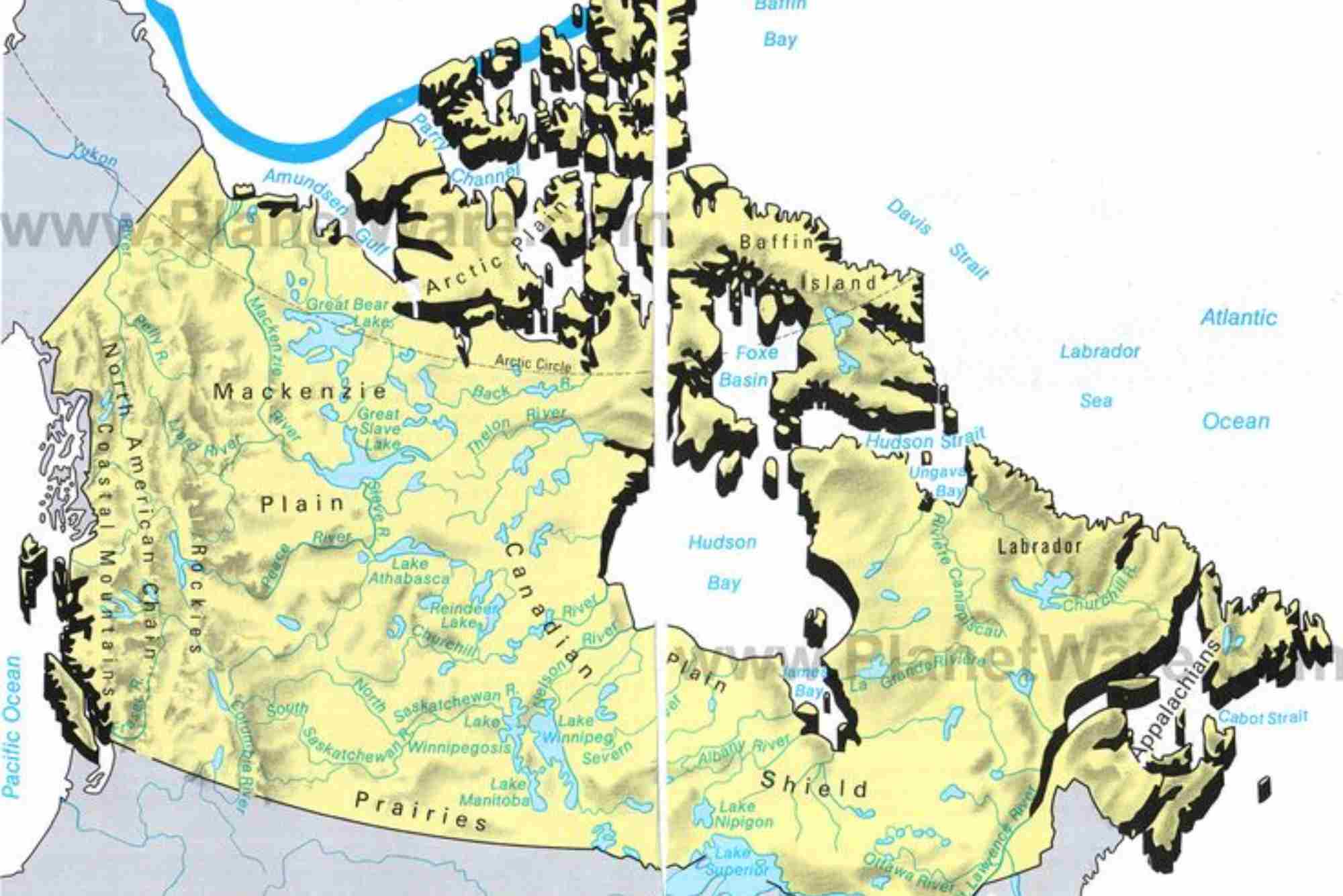Introduction
When navigating the vast landscapes of Canada, a map can be one of your most helpful tools, especially when exploring regions like the majestic Rocky Mountains and the iconic St. Louis. Whether you’re a geography enthusiast or planning a trip, having an easy-labeled Canada map is essential for better understanding the geography of this beautiful country. This article will guide you through the significance of the Rocky Mountains, the location of St. Louis, and how an easy-labeled map can enhance your understanding of Canada’s diverse geography.
What is an Easy Labeled Canada Map?
An easy-labeled Canada map provides a clear and simple visual representation of the country’s geographical features, cities, and landmarks. The map highlights key areas, making it easier to spot notable locations like the Rocky Mountains and St. Louis. It’s designed to be user-friendly, offering a quick glance at Canada’s physical landscape without being overwhelming. Whether you’re using the map for educational purposes, travel planning, or simply expanding your geographical knowledge, an easy-labeled Canada map is a valuable tool for anyone interested in the country’s natural beauty.
The Rocky Mountains in Canada: A Geographic Marvel
What Are the Rocky Mountains?
The Rocky Mountains, also known as the Rockies, are a major mountain range that stretches from the northern part of Canada all the way down to New Mexico in the United States. In Canada, the Rocky Mountains form a stunning part of the landscape in the provinces of British Columbia and Alberta. Known for their rugged terrain, towering peaks, and breathtaking natural beauty, the Rockies are one of Canada’s most famous geographical features.
Why Are the Rocky Mountains Significant?
The Rocky Mountains are not just a natural wonder; they are also an essential part of Canada’s geography, climate, and economy. The mountains create a natural barrier that influences the climate patterns in the region, dividing the colder northern climate from the milder southern climates. Additionally, the Rockies are rich in natural resources, including minerals and forests, and are a significant destination for tourism, offering activities such as hiking, skiing, and wildlife viewing.
Having an easy-labeled Canada map showing the Rocky Mountains can help you visualize their vast extent, ranging from the beautiful Banff National Park to the stunning Jasper National Park. These maps highlight key features like mountain peaks, rivers, and notable towns, making it easier to explore the area.
Notable Locations in the Rocky Mountains
-
Banff National Park: Located in Alberta, Banff is Canada’s first national park and one of the country’s most popular tourist destinations. With its turquoise lakes, snow-capped mountains, and abundant wildlife, Banff is a must-see.
-
Jasper National Park: Known for its stunning natural beauty and incredible starry skies, Jasper offers visitors a chance to experience the Canadian Rockies’ pristine wilderness.
-
Lake Louise: Another iconic location within Banff National Park, Lake Louise is famous for its crystal-clear waters and picturesque mountain backdrop.
St. Louis: A City with Rich History
Where is St. Louis Located?
St. Louis is not located in Canada but rather in the United States, specifically in the state of Missouri. However, it holds a significant connection to the larger North American region, especially due to its historical importance as a hub for exploration, trade, and development. It is situated near the confluence of the Mississippi and Missouri rivers, which played a pivotal role in the city’s development during the 19th century.
Why St. Louis is Important
St. Louis has been a key player in American history, especially during the westward expansion in the 1800s. It served as a critical starting point for the Lewis and Clark Expedition, which explored the western territories of the United States. Over the years, St. Louis has grown into a thriving metropolis with a rich cultural heritage, diverse architecture, and numerous attractions, such as the Gateway Arch.
While St. Louis may not be directly associated with the Canadian Rockies, it’s still important to understand its geographical context in North America. Including St. Louis on an easy-labeled Canada map gives a broader understanding of the continent’s geographical landscape.
Using an Easy Labeled Canada Map for Your Exploration
How to Read an Easy Labeled Canada Map
Reading an easy-labeled Canada map is straightforward. The map typically includes key geographical features such as mountains, rivers, cities, and provinces. The labels are simple and clear, ensuring that even beginners can understand the layout of the country.
When focusing on areas like the Rocky Mountains, you’ll find that the map highlights major peaks, national parks, and nearby cities, such as Calgary and Vancouver. The map might also include topographical features, such as the location of various plateaus, valleys, and other natural wonders.
Benefits of Using a Labeled Canada Map
-
Educational Purposes: An easy-labeled map helps students and geography enthusiasts understand the geographic layout of Canada with ease.
-
Travel Planning: If you’re planning a trip to the Canadian Rockies or any other part of the country, this map can serve as a useful tool for identifying key landmarks and routes.
-
Quick Reference: Whether you’re working on a project or just looking for some fun facts, an easy-labeled map can be a quick reference to understand Canada’s geography.
Exploring Canada’s Natural Beauty with an Easy Labeled Map
Canada is a country of vast landscapes, with everything from dense forests to stunning mountain ranges. Using an easy-labeled map allows you to explore different parts of Canada and get an in-depth understanding of where things are located. For instance, you can trace the path of the Rocky Mountains or locate the diverse national parks scattered throughout the country.
By using such a map, you gain a better understanding of how these natural features impact local climate, ecosystems, and human activities. For example, the Rockies not only shape the weather patterns in the region but also influence wildlife migration and the flow of rivers. Maps can help connect all these elements, allowing you to visualize how geography shapes everyday life in Canada.
An easy-labeled Canada map showing the Rocky Mountains and St. Louis is an indispensable tool for anyone looking to understand Canada’s vast geography. Whether you’re planning a visit, studying for a geography exam, or just curious about the terrain, such maps provide valuable insight into the natural and historical landmarks of Canada and its neighbors. Interested in learning more about Canada’s geography? Visit Finder to Go for additional resources and travel tips that will help you plan your next adventure!
FAQs
What is the easiest way to find a labeled map of Canada?
The easiest way to find a labeled map of Canada is by searching online or using map apps. You can also visit educational websites or geographic resource platforms.
Can I use an easy-labeled Canada map for educational purposes?
Yes, an easy-labeled map of Canada is an excellent resource for educational purposes. It helps students and geography enthusiasts understand the geographical layout of the country.
Does the easy-labeled Canada map show all major landmarks?
Yes, most easy-labeled Canada maps show key landmarks such as cities, rivers, mountains, and national parks. The map can help you locate areas like the Rocky Mountains and other famous spots.
Why is St. Louis important in North American geography?
St. Louis is important in North American geography due to its historical significance, especially during the westward expansion of the United States and its role as a starting point for the Lewis and Clark Expedition.









